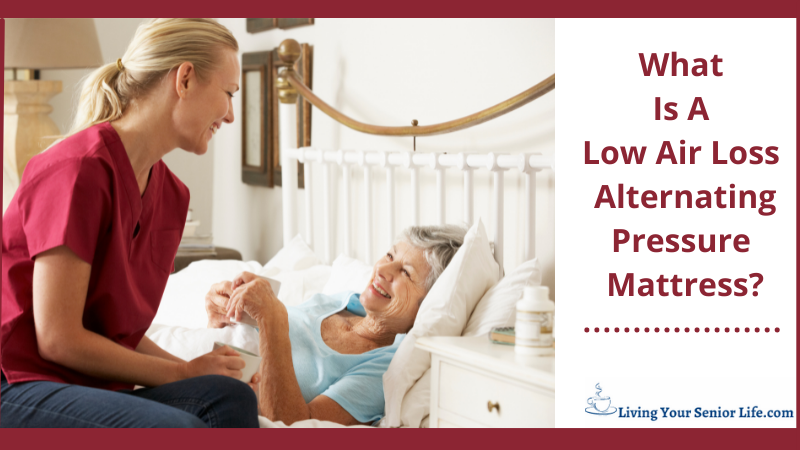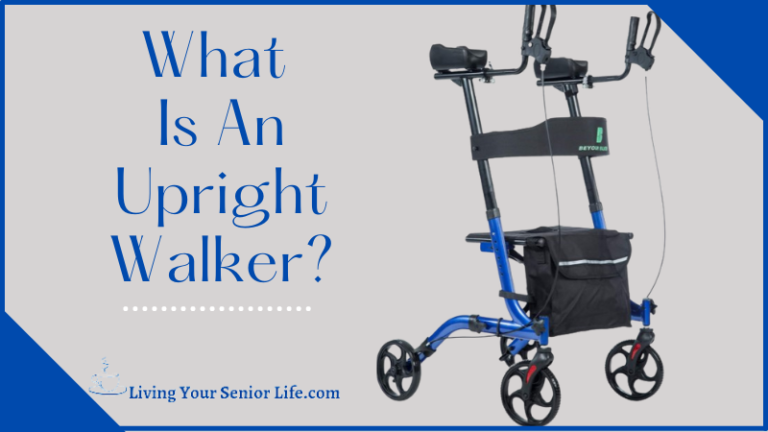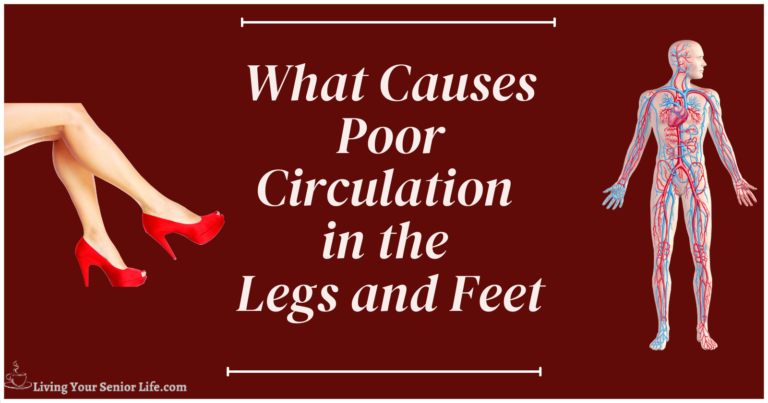If you or a loved one is bedridden or spends a significant amount of time in bed, you may have heard of a low air loss alternating pressure mattress. This type of mattress is designed to prevent and treat pressure ulcers, also known as bedsores, which can be a serious and painful medical condition. In this article, we will explore what a low air loss alternating pressure mattress is and how it works.
Key Takeaways:
- Low air loss alternating pressure mattresses are designed to prevent and treat pressure ulcers.
- These mattresses use a series of air cells to distribute pressure evenly across the body.
- Key features of low air loss alternating pressure mattresses include pressure redistribution, moisture control, and customization for different users.
What Is A Low Air Loss Alternating Pressure Mattress?
Low air loss alternating pressure mattresses are designed to distribute pressure evenly across the body, reducing the risk of pressure ulcers. They use a series of air cells that inflate and deflate in a specific pattern, creating a surface that alternates between high and low pressure. This movement helps to increase blood flow and reduce the amount of pressure on any one area of the body. These mattresses also have small holes throughout the surface that allow air to escape, creating a constant flow of air between the body and the mattress, which helps to keep the skin cool and dry.
These mattresses are often used in hospitals and long-term care facilities, but they can also be used at home. They come in various sizes and styles, including overlays that can be placed on top of an existing mattress, and full replacement mattresses.
Video: What Is A Low Air Loss Alternating Pressure Mattress?
Materials Used in Low Air Loss Alternating Pressure Mattresses
Low air loss alternating pressure mattresses are designed to provide a comfortable and therapeutic experience for patients who are bedridden. These mattresses are made using high-quality materials that ensure durability and comfort.
The following are some of the materials commonly used in low air loss alternating pressure mattresses:
Polyurethane foam: This is a type of foam that is used in the construction of the base of the mattress. It is a durable and comfortable material that provides excellent support to the patient’s body.
Nylon: Nylon is a strong and durable material that is used to cover the mattress. It is easy to clean and maintain, making it an ideal material for use in healthcare settings.
PVC: PVC is a type of plastic that is used to make the air cells in the mattress. It is a strong and flexible material that can withstand the weight of the patient without losing its shape.
Overall, the materials used in the construction of low air loss alternating pressure mattresses are of high quality and are designed to provide the patient with a comfortable and therapeutic experience.
Choosing the Right Low Air Loss Alternating Pressure Mattress
When it comes to selecting a low air loss alternating pressure mattress, there are several factors to consider. Here are some things to keep in mind:
- Bariatric
- For bariatric patients, it’s important to choose a low air loss alternating pressure mattress that provides adequate support and pressure relief. Look for mattresses that have a higher weight capacity, wider dimensions, and thicker air cells to provide better support. Additionally, some mattresses come with specialized features like bariatric mode, which adjusts the mattress’s pressure settings to accommodate the user’s weight.
- Most low air loss alternating pressure mattresses can support up to 400-500 pounds, but some models can support up to 1000 pounds. It’s important to choose a mattress that can handle the user’s weight to prevent damage to the mattress and ensure optimal comfort and pressure relief.
- Kids
- When it comes to children, it’s important to choose a low air loss alternating pressure mattress that is appropriate for their size and weight. Look for mattresses that have adjustable pressure settings, so you can customize the mattress’s firmness to their needs. Additionally, some mattresses come with pediatric mode, which adjusts the mattress’s pressure settings to provide optimal support and pressure relief for children.
- Low Pressure
- Low pressure is an important feature to look for in a low air loss alternating pressure mattress. This ensures that the mattress is comfortable and won’t cause discomfort or pain.
- Memory Foam
- Some low air loss alternating pressure mattresses come with a layer of memory foam. This can provide additional comfort and support, especially for those with back or joint pain.
- Accessories
- Many low air loss alternating pressure mattresses come with accessories like pumps and controllers. These accessories can help you adjust the mattress to your preferred level of firmness and provide added convenience.
Key Features of Low Air Loss Alternating Pressure Mattresses
If you are looking for a pressure-relieving mattress, then a low air loss alternating pressure mattress might be a good option for you. Here are some key features of this type of mattress:
- Air cells:
- Low air loss alternating pressure mattresses have air cells that inflate and deflate in a cyclical pattern. This helps to redistribute pressure and reduce the risk of pressure ulcers.
- Hose:
- The hose connects the air cells to the compressor, which inflates and deflates the cells.
- Alternate:
- The alternating pressure feature means that the mattress alternates between inflating and deflating different air cells. This helps to avoid bottoming out and reduces the risk of pressure ulcers.
- Mattress replacement:
- Low air loss alternating pressure mattresses can be used as a replacement for a regular mattress.
- Lateral rotation:
- Some low air loss alternating pressure mattresses also have a lateral rotation feature. This means that the mattress can turn the patient from side to side, which can help to prevent pressure ulcers.
- Low air loss therapy:
- Low air loss therapy is a feature that allows air to escape from the mattress, which can help to keep the patient cool and dry.
- Bottoming out:
- Bottoming out is when the patient’s body comes into contact with the bed frame or support surface. Low air loss alternating pressure mattresses help to prevent this by redistributing pressure.
- Low shear:
- Low shear means that the mattress reduces the friction between the patient’s skin and the support surface. This can help to prevent skin breakdown and pressure ulcers.
- Vapor permeable:
- Some low air loss alternating pressure mattresses are vapor permeable, which means that they allow air and moisture to pass through the mattress. This can help to prevent skin breakdown and pressure ulcers.
- CPR valve:
- A CPR valve allows for rapid deflation of the mattress in case of an emergency.
- Dimensions:
- Low air loss alternating pressure mattresses come in different sizes to fit different bed frames.
- Auto-firm:
- Some low air loss alternating pressure mattresses have an auto-firm feature that inflates the mattress to a firm setting for patient transfers or repositioning.
- Audio and visual alarm alerts:
- Low air loss alternating pressure mattresses have audio and visual alarm alerts to notify the caregiver of any issues with the mattress.
- Head stability:
- Some low air loss alternating pressure mattresses have a head stability feature that helps to keep the patient’s head in place.
- Rapid deflation:
- Rapid deflation allows for quick and easy deflation of the mattress.
- EZ lock/quick-release design:
- EZ lock/quick-release design allows for easy attachment and detachment of the mattress from the bed frame.
- Compressor:
- The compressor inflates and deflates the air cells in the mattress.
- Comfort levels:
- Low air loss alternating pressure mattresses have different comfort levels to accommodate different patient preferences.
Safety Features and Alarms
A low air loss alternating pressure mattress comes with various safety features and alarms to ensure the safety and comfort of the user. These features and alarms are designed to alert the caregiver or user in case of any malfunction or issue with the mattress.
One of the safety features is the auto-firm feature, which ensures that the mattress is properly inflated and firm to support the user’s weight. This feature helps to prevent bottoming out, which can cause discomfort and pressure sores.
The mattress also comes with audio and visual alarm alerts that notify the caregiver or user in case of low pressure, power failure, or any other issues. The alarms are designed to be loud and clear to ensure that they are easily heard and understood.
In addition, the mattress has an audio and visual alarm that alerts the caregiver or user in case of any leaks or punctures. This feature helps to prevent air loss and ensures that the mattress provides continuous support and comfort.
Overall, the safety features and alarms of a low air loss alternating pressure mattress help to ensure the safety and comfort of the user. They provide peace of mind to the caregiver and user, knowing that they will be alerted in case of any issues or malfunctions with the mattress.
Understanding Immersion and Mucosal Drainage
When it comes to low air loss alternating pressure mattresses, two important concepts to understand are immersion and mucosal drainage.
Immersion refers to how much the mattress conforms to your body, distributing your weight evenly and reducing pressure points. This is important for preventing pressure ulcers and promoting healing for those who already have them. The level of immersion can be adjusted based on the individual’s needs and preferences.
Mucosal drainage, on the other hand, refers to the movement of fluids away from the skin’s surface. This is important for preventing skin breakdown, as excess moisture can lead to maceration and damage to the skin. Low-air loss mattresses are designed to promote mucosal drainage and keep the skin dry and healthy.
Together, immersion and mucosal drainage help to prevent pressure ulcers and promote healing for those who already have them. By evenly distributing weight and promoting fluid movement away from the skin’s surface, low air loss alternating pressure mattresses can be an effective tool for improving patient outcomes.
Addressing Moisture and Microclimate Control
Maintaining and cleaning low air loss alternating pressure mattresses is important to ensure their longevity and effectiveness in preventing pressure ulcers. Here are some tips on how to properly maintain and clean your low air loss alternating pressure mattress:
Low air loss alternating pressure mattresses are designed to address the issue of moisture buildup and microclimate control. This is a critical feature for patients who are bedridden for extended periods and are at risk of developing pressure ulcers.
One of the ways that low air loss mattresses address this issue is through moisture-wicking technology. The top layer of the mattress is made from a breathable and moisture-wicking material that helps to keep the patient dry and comfortable.
In addition to moisture-wicking technology, low air loss mattresses also have microclimate control features. Microclimate refers to the temperature and humidity around the patient’s skin. If the microclimate is too warm and humid, it can lead to moisture buildup and increase the risk of pressure ulcers.
Low air loss mattresses have a series of small air holes that allow air to circulate around the patient’s skin, helping to regulate the microclimate. Some mattresses also have a heating and cooling system that can be adjusted to the patient’s comfort level.
Overall, addressing moisture buildup and microclimate control is an essential feature of low air loss alternating pressure mattresses. By keeping the patient dry and regulating the microclimate, these mattresses can help prevent pressure ulcers and promote healing.
Adapting to Power Outages
In the event of a power outage, a low air loss alternating pressure mattress may not function as intended. This is because these mattresses require electricity to power the air pump that controls the alternating pressure system. When the power goes out, the mattress will lose air pressure and become flat.
To prepare for a power outage, it is recommended that you have a backup plan in place. This may include having a backup generator or a backup mattress on hand. A backup generator can be used to power the air pump during an outage, while a backup mattress can be used as a temporary replacement until power is restored.
It is important to note that using a backup generator requires proper ventilation to prevent carbon monoxide poisoning. Be sure to read and follow all safety instructions provided with your generator.
If you do not have a backup generator or backup mattress, it is recommended that you contact your healthcare provider for further guidance. They may be able to provide you with alternative options or resources to help you during a power outage.
Maintaining and Cleaning Low Air Loss Alternating Pressure Mattresses

Regular Cleaning
Regular cleaning of your low air loss alternating pressure mattress is important to prevent the buildup of bacteria and other harmful microorganisms. To clean your mattress, you should follow the manufacturer’s directions. The following steps are for general use:
- Remove all bedding and accessories from the mattress.
- Wipe down the mattress with a damp cloth or sponge using a mild soap solution. Be sure to avoid using harsh chemicals that can damage the mattress.
- Rinse the mattress with clean water and wipe it down again with a clean, dry cloth.
- Allow the mattress to air dry completely before replacing the bedding and accessories.
Fluid-Resistant and Anti-Microbial Features
Some low air loss alternating pressure mattresses come with fluid-resistant and anti-microbial features. These features can help to prevent the buildup of bacteria and other harmful microorganisms on the mattress. To ensure that these features remain effective, you should follow these tips:
- Check the manufacturer’s instructions for specific cleaning and maintenance guidelines for your mattress.
- Use only cleaning products that are recommended by the manufacturer.
- Avoid using harsh chemicals or abrasive cleaning tools that can damage the mattress or its features.
- Regularly inspect the mattress for signs of wear and tear, such as cracks or tears in the cover or damage to the air cells.
Fluid-Proof Covers
Fluid-proof covers can help to protect your low air loss alternating pressure mattress from spills and other accidents. To maintain the effectiveness of your fluid-proof cover, you should follow these tips:
- Clean the cover regularly using a mild soap solution and a damp cloth or sponge.
- Rinse the cover with clean water and wipe it down with a clean, dry cloth.
- Allow the cover to air dry completely before replacing it on the mattress.
- Inspect the cover regularly for signs of wear and tear, such as cracks or tears, and replace it if necessary.
By following these tips, you can help to ensure that your low air loss alternating pressure mattress remains clean, hygienic, and effective in preventing pressure ulcers.
FAQs
What is the difference between a low-air loss mattress and an air mattress?
A low-air loss mattress is specifically designed to help prevent and treat pressure ulcers by alternating air pressure and allowing for air circulation to the skin. An air mattress, on the other hand, is designed for comfort and convenience and does not have the same pressure-reducing features as a low-air loss mattress.
What is a Group 2 low air loss mattress and when is it recommended?

A Group 2 low-air loss mattress is a type of low-air loss mattress that is designed for patients with Stage II or early Stage III pressure ulcers. It is recommended for patients who are at moderate risk of developing pressure ulcers or who have already developed early-stage pressure ulcers.
What is the cost of a low air loss mattress and is it covered by insurance?
The cost of a low-air loss mattress can vary depending on the manufacturer and model. However, most insurance plans, including Medicare, will cover the cost of a low air loss mattress if it is deemed medically necessary by a healthcare provider. It is important to check with your insurance provider to determine coverage and any out-of-pocket costs.
Additional Reading
Takeaway
In conclusion, a low air loss alternating pressure mattress is an innovative and effective solution for preventing and treating pressure ulcers. By providing a constant flow of air and adjusting pressure points, these mattresses can help improve circulation, reduce discomfort, and promote healing. With their advanced technology and customizable features, low air loss alternating pressure mattresses offer a comfortable and therapeutic sleep surface. If you or a loved one is at risk for pressure ulcers, consider investing in a low air loss alternating pressure mattress to ensure optimal comfort and support.
Have you used a low-air loss alternating pressure mattress? Please comment below with your experience.











